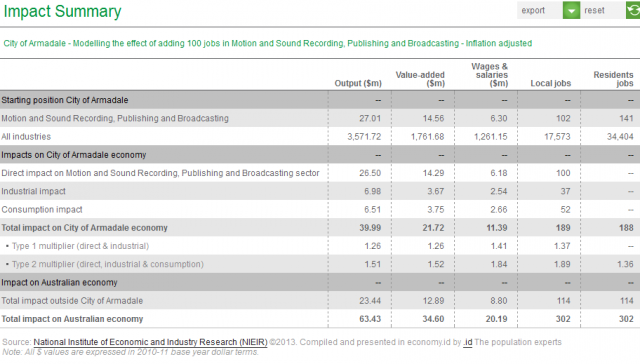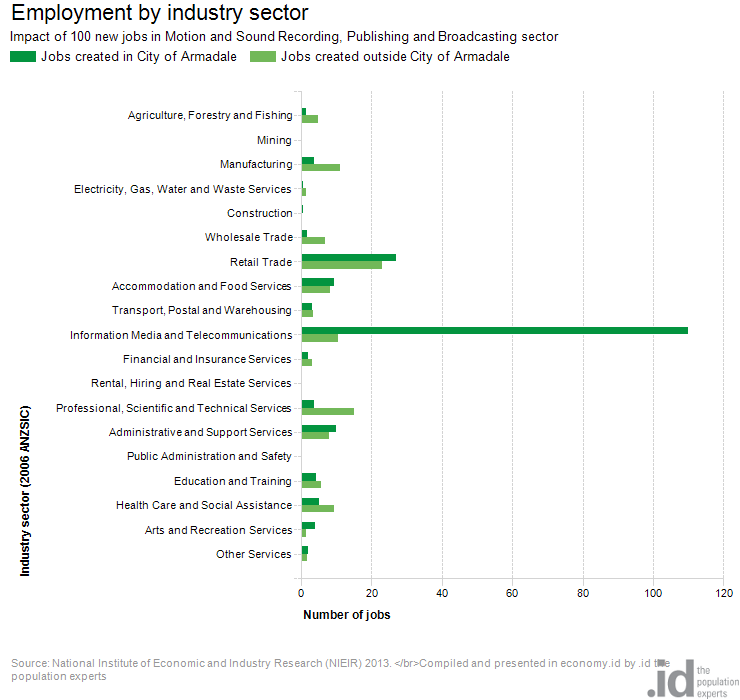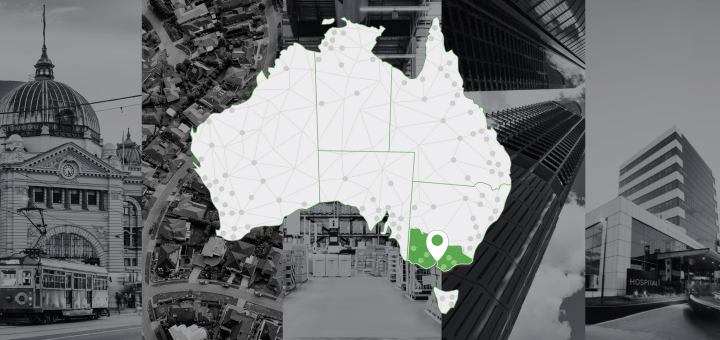What effect would it have on your economy and your workforce if your area was able to attract a major new employer? What would be the ongoing job losses if a company were to close down in your area, not just in the company itself but in associated industries. Up to now, economy.id has been great at telling you about your economy in the past, how it has changed and how it compares to the region, and now .id are pleased to launch the Impact Assessment Model (IAM) for all our economy.id subscribers, which can answer just such questions as these.
The Economic Impact Modelling (EIM) is included with economy.id for all our subscribers at no extra charge. It is accessible behind a password, under the “Economic Impact Model” link in the menu. It is only expected to be used by council staff, and is not for public use.
The EIM is based on an Input-Output matrix, which itself is derived from the NIEIR microsimulation model which underlies economy.id. An Input-Output matrix is a measure of how industries in your area are interlinked. Every industry has a supply chain within the local and wider national economy, and changes in one industry affect the suppliers and customers of that industry, as well as the wider consumption of products in the community. The matrix quantifies these effects and estimates the flow on effects of gaining or losing jobs, and what impact it has on other parts of the economy.
How it works
Go into the IAM, and choose either “Jobs” or “$m sales” – this allows you to estimate the effects of adding a business with a certain number of jobs, or a certain size in turnover. Then select an industry sector. For a negative impact (loss of jobs or sales) use a negative number.
The results display in a report format, starting with a summary, then looking at the effects on jobs and value-added by industry.
Let’s look at an example.
The City of Armadale has an economy of $2 billion, with about 17,500 local jobs, but twice as many employed residents. Most people leave the area to work. The main industries are Health Care, Retail Trade and Construction. They are looking at attracting a major publishing company to locate their operations in the area, the company employs about 100 people.
In the impact module, the parameters are entered on the toolbar and look like this.

The modelling shows that the addition of this company would add flow on effects via other industries in the supply chain, for a total number of jobs (including the initial 100) of 137. This is the “Type 1” multiplier. In addition, once the economic activity flows through the economy, there is a “Type 2” multiplier, which models the extra spending by workers and consumers in the economy due to the initial impact and Type 1 multiplier.

The combination of Type 1 and Type 2 multipliers shows that adding 100 jobs in Publishing and Printing would have final consumption and flow on effects of creating 189 jobs. Other than the sector itself, significant numbers of jobs are in the Retail Trade and Administrative Services sectors. It would also add $21.7m in value-added to the Armadale economy, and, importantly, $34.6m to the wider Australian economy (including the $21.7m).
Importantly, for Armadale, which has a goal of attracting industries to employ the rapidly growing residential population, the majority of the jobs are likely to be filled by residents of the area.
This is powerful ammunition if you are looking to attract and retain businesses to the area, and experimenting with the model can give you an idea of those industries with the strongest supply chains, which would be the best prospects for improving your economy. As the model also works in reverse, you can also see what the effects of job losses or industries leaving the area are.

The results of this model should be treated only as a guide – it is a simplification of reality, and any effects do take some time (months or years) to flow through the system. In addition, it assumes the existing supply chains are maintained – if a very large economic impact was used (eg. 10,000 jobs), this would significantly modify the existing supply chains, making the model less accurate. Also, if there is no presence of an industry in the area at the moment, the multipliers revert to national averages, as there is no local information to base the model on.
The Impact Assessment Model is a very useful tool to assist in your economic development and advocacy. If you would like more information, or a training session in using the impact model and the rest of economy.id, please contact .id by phone or email. To learn more about Australia’s economy and population, access our demographic resource centre or sign up to our monthly newsletter.













